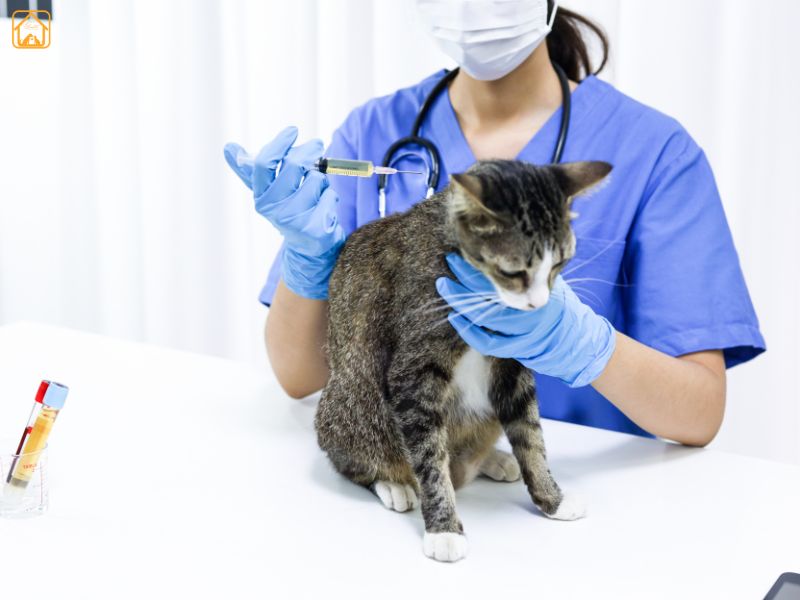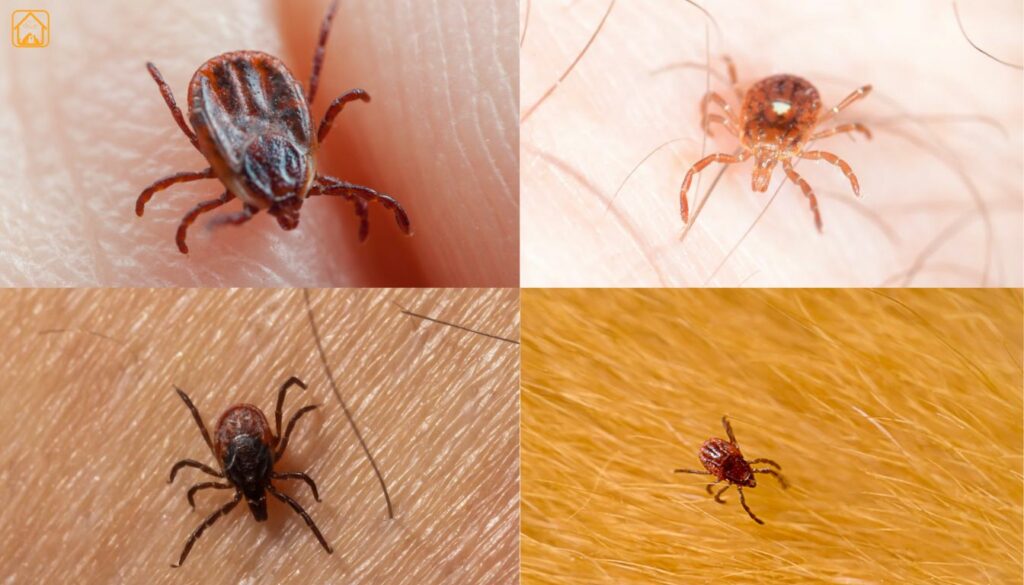Many cat parents have been shocked to find out that, yes, our feline friends are at risk for tick-borne illness in cats, just like dogs and even humans. Let’s get you prepared, so you can keep your cat safe, healthy, and happy.
Overview of Tick-Borne Diseases in Cats
Tick-Borne Diseases in Cats are illnesses spread when infected ticks bite the cat. These ticks carry bacteria, parasites, or viruses from host to host. While cases aren’t as common as in dogs, cats are still vulnerable, especially those who go outdoors.
Tick-borne infection in cats can cause fevers, joint pain, organ damage, and even fatalities if untreated. Some diseases, like cytauxzoonosis also called bobcat fever, can act swiftly and be deadly. Early identification and prevention make all the difference.
I’ve seen cats survive and thrive after early treatment, but I’ve also seen heartbreak when signs were missed. Prevention and early action really do save lives.
Types of Ticks Affecting Cats
Cats can be bitten by several tick species that carry various diseases. The main culprits include:
- Brown dog tick (Rhipicephalus sanguineus)
- Black-legged tick (deer tick) (Ixodes scapularis)
- American dog tick (Dermacentor variabilis)
- Lone Star tick (Amblyomma americanum)
So how does a tick-borne illness in cats actually happen? Ticks attach by grabbing onto fur or skin, often in hidden spots like ears, neck, and between the toes, and feed for hours or days. As the tick drinks blood, it can release pathogens into your cat’s bloodstream.
The longer the tick stays on, the higher the risk of disease transmission. Outdoor cat tick risk is especially high in grassy, wooded, or brushy environments. Indoor cats are far less likely to encounter ticks unless they live with dogs or humans who bring ticks inside.
Common Tick-Borne Diseases in Cats
Cytauxzoonosis (Bobcat Fever)
This is among the most feared tick-borne diseases in cats in the United States, especially in southern and central regions. Spread mainly by the Lone Star tick, cytauxzoonosis in cats (also called bobcat fever) can cause high fever, jaundice, respiratory distress, and is often fatal if not treated quickly.
Hepatozoonosis in Cats
Unlike most other tick diseases, Hepatozoonosis infects cats when they ingest (rather than are bitten by) an infected tick. It’s less common but can lead to lethargy, muscle wasting, anemia, and signs of pain.
Tularemia (Rabbit Fever) in Cats
Caused by Francisella tularensis, this tick-borne infection in cats can be zoonotic, meaning humans can catch it. Tularemia often starts with fever, ulcers, swollen lymph nodes, and can progress rapidly without treatment. Be cautious if your cat brings home wild rodents or rabbits.
Babesiosis and Piroplasmosis in Cats
These protozoal diseases attack red blood cells and may cause anemia, weakness, and yellowing of gums. Babesiosis in cats is more common in parts of Africa, but isolated cases have been identified elsewhere.
Anaplasmosis and Feline Anaplasmosis
Transmitted mainly by the black-legged (deer) tick, anaplasmosis in cats often leads to fever, joint pain, and low platelet counts. The infection can mimic other common feline illnesses.
Other Diseases: Ehrlichiosis and Lyme Disease in Cats
While rare, ehrlichiosis in cats and Lyme disease cats do happen, typically in regions where dog infections are common. Symptoms are often subtle but can include fever, lethargy, and changing organ function.
Some tick species can also cause feline tick paralysis, where a toxin in the tick’s saliva triggers weakness progressing from back limbs forward. It’s scary to watch, but removing the tick can sometimes reverse symptoms.
Symptoms and Signs of Tick-Borne Diseases in Cats
Recognizing symptoms early matters. Tick-borne diseases in cats show a wide range of warning signs, often within days to weeks after a bite. Classic cat tick disease signs include:
- Fever and sudden lethargy (your cat may hide or sleep much more)
- Loss of appetite and weight loss
- Stiffness, joint pain, or difficulty walking
- Anemia: pale gums, fatigue, possible blood in stool
- Swollen lymph nodes
- Jaundice (yellowed skin or eyes)
- Redness or itching at bite site
- Changes in meow or difficulty swallowing
- Weakness starting in hind legs (can mean tick paralysis)
Ever noticed your cat refusing treats, or acting “off”, right after you removed a tick? Don’t ignore it. These red flags mean it’s time to call the vet, fast.
Diagnosing Tick-Borne Illnesses: Veterinary Tests and What to Expect

Your vet has a toolkit to detect tick-borne illness in cats. After a physical exam and full history including recent outdoor exposure or tick removal, the following tests may be recommended:
- Complete Blood Count (CBC): This checks for anemia, changes in white blood cells, and signs of infection. Many tick-borne infection cats cause low red blood cells or abnormal platelets.
- Blood Chemistry Panel: This test looks for organ damage, especially in the liver and kidneys. Some diseases, like Lyme disease in cats or cytauxzoonosis, can cause organ failure if not caught early.
- PCR (Polymerase Chain Reaction) Testing: Think of this as a high-tech DNA test. It can spot the genetic material of bacteria or parasites from diseases like babesiosis or anaplasmosis in cats, even if there aren’t many organisms in the blood yet.
- Serology (Antibody Tests): These tests check if your cat’s immune system has been fighting specific tick-borne illnesses. They’re especially helpful for chronic infections or when symptoms come and go.
- Cytology: In some cases, your vet may examine blood smears under a microscope to spot parasites like Cytauxzoon felis (the cause of bobcat fever) or Babesia species, which cause babesiosis in cats.
- Urinalysis: Kidney problems are a common complication, especially with Lyme nephritis. A urine protein:creatinine ratio might be recommended to check for damage.
- Tick Identification: If you’ve removed a tick from your cat, bring it in! Identifying the tick species gives clues about which diseases your cat might be at risk for (yes, it really helps!).
Above all, don’t wait if your cat’s showing signs. With tick-borne diseases in cats, time really is of the essence.
Treatment Options and Recovery for Feline Tick-Borne Infections
Getting the right diagnosis is only half the battle when it comes to tick-borne diseases in cats. Each tick-borne infection in cats is a little different, so your vet will choose the medication and support that fits your cat’s needs.
Here’s what treatment often looks like for common tick diseases in cats:
- Antibiotics: Doxycycline is a go-to for many bacterial tick-borne illnesses, like anaplasmosis and ehrlichiosis in cats. Treatment usually lasts at least 2-4 weeks. Don’t stop early, even if your cat seems better!
- Antiparasitic Medications: Diseases like cytauxzoonosis in cats or babesiosis cats are caused by protozoan parasites. These often need specific drugs, sometimes at a specialty clinic. Fast action is critical with cytauxzoonosis (bobcat fever), as it can be deadly within days.
- Supportive Care: This is where the real TLC comes in. IV fluids, appetite stimulants, and pain relief help your cat feel better while fighting off infection. Blood transfusions may be needed for severe anemia.
- Anti-inflammatories: Joint pain, fever, and swelling can be managed with safe feline anti-inflammatories under your vet’s guidance.
- Tick Removal: If the tick is still attached, your vet will remove it safely. Never squeeze or burn a tick, this can make things worse.
The road to recovery can feel long, but many cats bounce back with timely therapy. Unfortunately, no approved vaccines exist for feline tick diseases as of now (AVMA). Prevention is paramount.
Prevention: Tick Control, Tick Checks, and Reducing Outdoor Cat Risks
Tick Control Solutions
Preventing tick-borne diseases in cats means tackling the source, ticks themselves. Use a vet-approved tick treatment for cats all year round. Options include:
- Topical Treatments: Spot-on products (like fipronil or selamectin) are applied between the shoulders and kill ticks on contact. Always use products made specifically for cats, some dog formulas are toxic to felines!
- Oral Medications: Some newer chewable tablets provide month-long protection. Ask your vet what’s available and safe for your cat.
- Tick Collars: Breakaway tick collars can help, but check that they’re cat-safe and replace them as directed.
- Sprays and Powders: Useful for spot treatment, but be careful, cats groom themselves and can ingest these products. Follow label instructions closely.
Daily Tick Checks and Grooming
Regular tick check for cats is a must, especially after outdoor adventures. Run your hands along your cat’s body, focusing on ears, neck, under the legs, tail base, and between the toes. Look for small bumps or dark spots.
Outdoor Safety and Lifestyle Changes
- Keep lawns trimmed, leaf litter cleared, and yard tidy
- If possible, make your cat an indoor pet or only allow supervised outdoor time
- Don’t let cats hunt wild rodents or rabbits (reduces tularemia risk)
- Wash bedding regularly
You know what’s funny? I started making tick checks a cuddly routine with my own cat, Lucy. She thinks it’s just extra scratches, which works for both of us! Consistency is everything.
Proper Tick Removal from Cats: Step-by-Step Guide
- Gather fine-tipped tweezers, gloves, and a clean container (for tick storage).
- Part the fur and grasp the tick as close to your cat’s skin as possible.
- Slowly pull upward with even pressure; do not twist or jerk!
- Place the tick in a sealed container for possible veterinarian testing.
- Wash your hands and clean the bite area with pet-safe antiseptic.
- Monitor your cat for any symptoms tick-borne disease cats can show up days later.
Never use matches, oils, or fingers for tick removal from cats.
FAQs About Tick-Borne Diseases in Cats
Can cats get tick-borne diseases even if they stay indoors?
Indoor cats have a much lower risk, but it’s still possible. Ticks can hitchhike on humans, dogs, or other pets that come inside. Always inspect new pets or clothing after time outdoors, and use prevention as recommended.
Are tick-borne illnesses in cats contagious to other pets or people?
Most tick-borne diseases aren’t spread between pets or to people directly. However, some (like tularemia) are zoonotic, so proper hygiene and tick disposal are crucial.
What are the first signs I should watch for after a tick bite?
Watch for fever, loss of appetite, weakness, sore joints, or sudden changes in behavior. If anything seems off, check with your veterinarian quickly, some illnesses progress fast.
Is there a test for all tick-borne diseases at once?
No single test detects all tick diseases. Your vet may use combination of blood tests, PCR, and examinations based on your cat’s symptoms and the ticks found.
Can I prevent cats from ever getting ticks?
While it’s almost impossible to avoid all tick contact, proper prevention, using tick control products, routine checks, and reducing outdoor exposure, drastically cuts the risk of tick-borne infection cats face.
Is tick treatment for cats different from dogs?
Absolutely! Never use dog tick removal or prevention products on cats, as they can be toxic. Only use vet-recommended, feline-safe tick solutions.
Can tick-borne diseases come back even after treatment?
Some diseases, like cytauxzoonosis or babesiosis, may leave cats as carriers, needing ongoing monitoring. Full relapses are rare with proper care, but regular vet checks are wise for high-risk cats.
Conclusion
Tick-borne diseases in cats can be serious, but with the right care and awareness, they’re preventable. Regular checks, tick control, and prompt vet visits can protect your feline friend. Stay informed, act early, and your cat can enjoy a happy, healthy life, free from the dangers ticks may bring.



